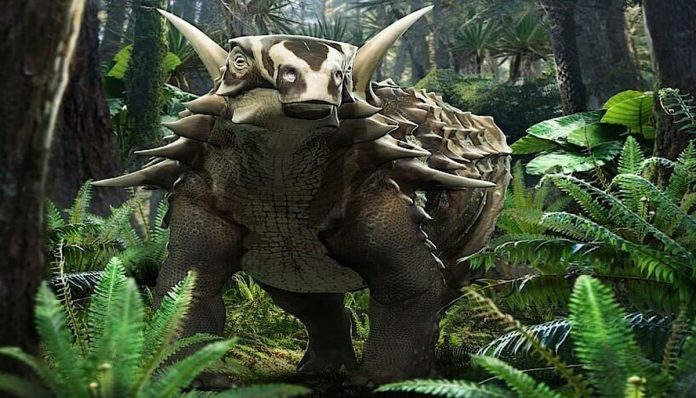Scientists from Germany and Austria took a closer look at the braincase of a dinosaur from Austria. Scientists investigated the fossil with a micro-CT. They have found out that it was sluggish and deaf. The study has been published in Scientific Reports.
Ankylosaurs are eight meters in body length and they represent a group of herbivorous dinosaurs named ‘living fortresses’. Its whole body is cluttered with bony plates and spikes. Ankylosaurids has a club tail. Nodosaurids has elongated spikes on their necks and shoulders. But they had puzzling lifestyle.
Ankylosaurs preferred a lonesome life because of an inferior sense of hearing. Scientists from universities of Greifswald and Vienna have done their research on the braincase of the Austrian dinosaur. They have used a high-resolution computer tomograph to have a digital three-dimensional cast.
Fossil braincases have neurosensory tissues. These are important for scientists because these can give insights into the lifestyle of an animal. The inner ears suggest auditory capacities and skull orientation.
Struthiosaurus austriacus is a small nodosaurid from the Late Cretaceous of Austria. The fossil of this dinosaur belongs to the collection of the Institute for Paleontology in Vienna in the 19th century. Scientists have examined the tiny braincase and found out details of the anatomy and lifestyle of Struthiosaurus austriacus. They learnt about sense of equilibrium and hearing of the species.
Scientists found that Struthiosaurus’ brain is similar to the brains of its close relatives. An evolutionary old part of the brain, flocculus, was very small. It is important for the fixation of the eyes during motions of the head and entire body. This is useful for these animals as they try to target potential competitors or aggressors. The semicircular canals in the inner ear hints towards an extraordinarily sluggish lifestyle of the species. Scientists also found the shortest lagena of any dinosaur. The lagena is the part of the inner ear. It is a part of where hearing takes place. Its size help to infer auditory capacities.
This research helped to reveal new insights about the evolutionary history of dinosaurs and their world.

